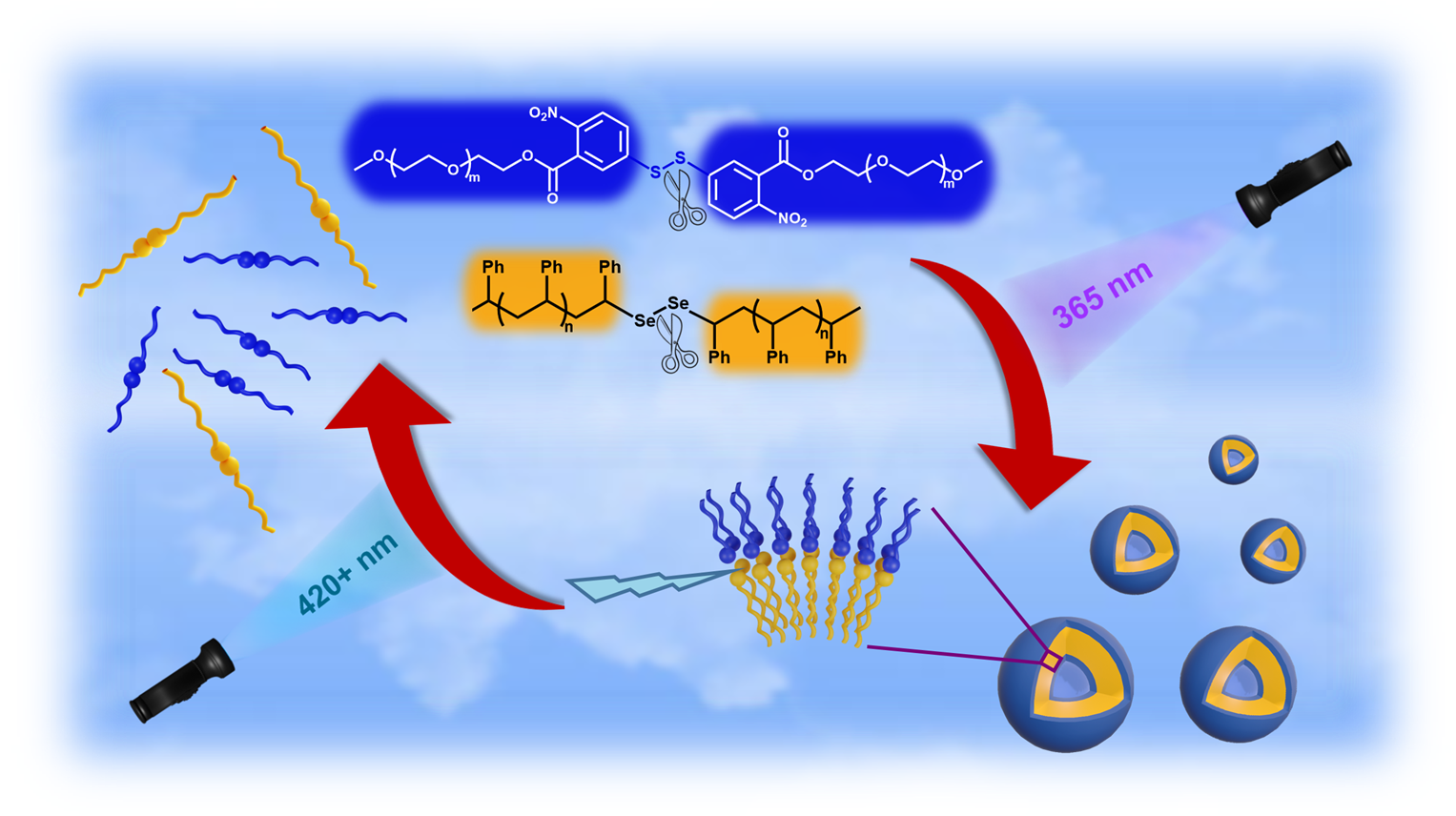Peng Zhao, Jiahao Xia, Muqing Cao, Huaping Xu
ACS Macro Lett., 2020, 9, 163-168.
Wavelength-controlled Se–S dynamic chemistry was put forward recently as a convenient way to regulate the balance of a selenide sulfide exchange reaction. In this paper, we synthesized an asymmetric polymeric amphiphile linked with a Se–S bond and then induced it to self-assemble into vesicles in water. When the visible light was applied to the assembly solution with addition of toluene, Se–S bonds containing vesicles were ruptured. Thus, the wavelength-controlled light responses of relatively stable polymer assembly were accomplished by introduction of the Se–S dynamic covalent bond, and the response mechanism of the Se–S bond in the vesicle was explored by nuclear magnetic resonance (NMR), gel permeation chromatography (GPC), and X-ray photoelectron spectroscopy (XPS). The results indicated that fracture of the Se–S bond led to the dissociation of assembly. Introduction of Se–S dynamic chemistry into the molecular assembly area enriched the light-responsive polymer systems and would bring many potential applications in the future.

